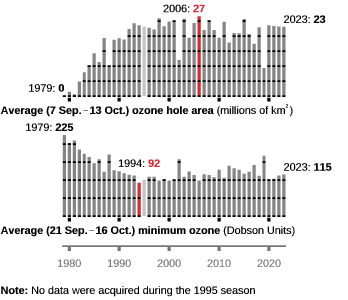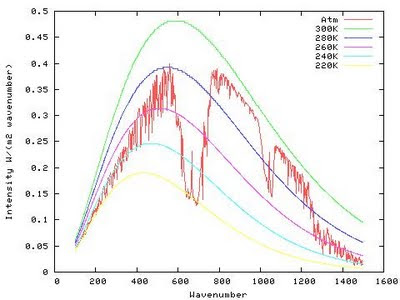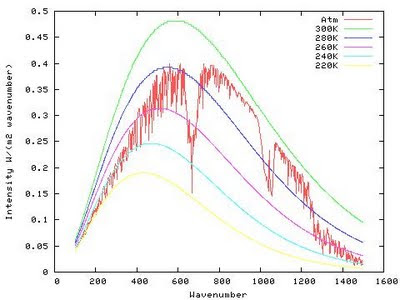Never mind
This has not been a good holiday week for Nicola Scafetta. First, Rasmus and Gavin, not Eli he hastens to add, went public with Nicola's dodging and ducking their attempts to figure out Scafetta and West
We use a suite of global climate model simulations for the 20th Century to assess the contribution of solar forcing to the past trends in the global mean temperature. In particular we examine how robust different published methodologies are at detecting and attributing solar-related climate change in the presence of intrinsic climate variability and multiple forcings. We demonstrate that naive application of linear analytical methods such as regression gives non-robust results. We also demonstrate that the methodologies used in Scafetta & West [2005, 2006a, b, 2007, 2008] are not robust to these same factors and that their error bars are significantly larger than reported. Our analysis shows that the most likely contribution from solar forcing a global warming is 7±1% for the 20th Century, and is negligible for the warming since 1980.They are pulling teeth trying to figure out the secret sauce that Scafetta used.
Then Krivova, Solanki and Wetzlar dissed Scafetta and Willson for using the wrong model, SATIRE-T, to bridge the ACRIM gap producing a dubious and wrong total solar irradiance (TSI) record. When the proper method, SATIRE-S, is used the TSI actually shows a small decrease since 1974.
Today, from the north country, ErikH brings word that another wooden stake is being driven into the another twitching corpse left by Scafetta and West.
The hypothesis of a sun-climate complexity linking based on common Levy-walk statistics for the integrated solar are index and the global temperature anomaly is proven to be false. The test of this hypothesis proposed by N. Scafetta and B. West, Phys. Rev. Lett. 90, 24 (2003) does not account for the trends in the signal, cannot deal correctly with in nite variance processes (Lévy flights), and crucial information about the stochastic properties of the signals is lost by considering only the second moment. The Lévy-walk signatures and common waiting-time exponent μ ~2.1 found for the two signals are essentially a result of failure to eliminate the e ffects of trends found for the two signals are essentially a result of failure to eliminate the e ffects of trends. Our analysis shows that properly detrended, integrated solar are index is well described as an uncorrelated Lévy flight, while the detrended, integrated temperature anomaly record is consistent with a persistent fractional Brownian motion. These very di fferent stochastic properties of the solar and climate records do not support the hypothesis of a sun-climate complexity linking.Scafetta and West claimed that the solar flare index (SFI) and the global temperature anomaly (GTA) were strongly linked. Since the SFI is linked to TSI this links TSI and GTA, a result much desired by Scafetta and the solar elves. Rypdal and Rypdal show that this result is an artifact forced when Scafetta and West did not detrend the two time series and show that SFI is a Lévy flight while GTA is a fractional Brownian processl
At this point Eli needs to translate a bit. What it all has to do with is the step size distribution as one advances across the SFI or GTA records in time. These are all random walks but with different distributions of the step sizes. R2 argue that any idiot can tell the difference between the step size distribution in the SFI and GTA by removing the long time trends and then looking at the detrended probability distribution functions. They show that the test used by S&W on series with a long term trend will make them all appear similar, and that if the GTA and SFI are detrended the correlation disappears.
S&W, neglecting detrending, claimed that both SFI and GTA were Lévy walks characterized by similar scaling law powers, and therefore were strongly correlated. A Lévy flight is a random walk where the tail of the step size distribution is higher than would be predicted by an exponential falloff. R2 find that the SFI is a Lévy flight. (Here is a lot less handwaving for the interested) Fractional Brownian motion is a Gaussian process. All of these can be characterized by what is called the Hurst parameter, which is only valid for stationary (the probability and parameters such as the mean and the standard deviation, do not change as one moves along the series) stochastic (random) processes. This clearly demands detrending. For the GTA, it turns out that if the time series is properly detrended the Hurst parameter (0.65) indicates that the steps are positively correlated, e.g changes in global temperature anomalies on a monthly basis are correlated at least a few steps out from any point and the series can be described as a fractional Brownian process. For normal Brownian motion H= 0.5. For a Lévy flight, H~ 1.0.
As Dano points out
The comment erikH linked to has a key idea in the conclusion: the climate system has a lot of inertia and the short-scale vagaries of TSI cannot meaningfully perturb something with that much inertia at scales the denialists trumpet.It's been a rough week for Scafetta. Comments?





















